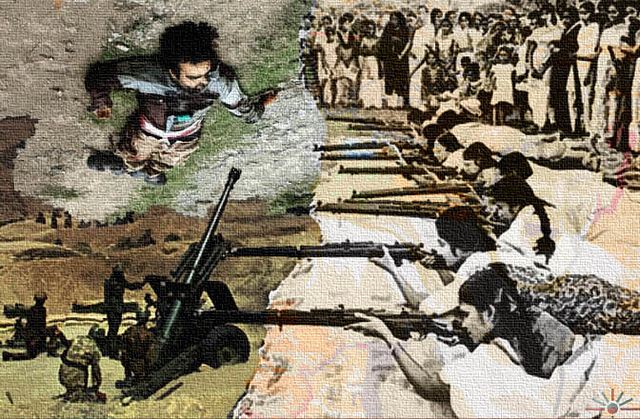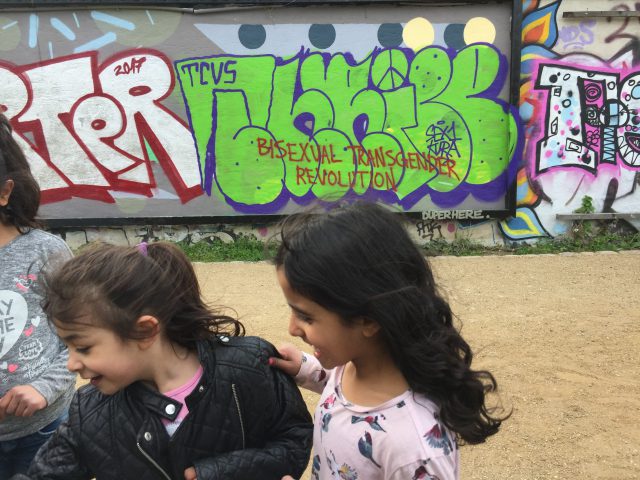Phoolan Devi was shot dead on July 25th, 2001. The gunmen fled the scene, and within two days, a man named Sher Singh Rana surrendered himself to police, saying that the murder was an act of revenge. For many Indians, the following years of police incompetence, and Rana’s own short-lived escape from Tihar Jail in 2004, were to be expected. After all, this was a case involving a woman known popularly as the “Bandit Queen,” a hero for many in the lower castes, and a nightmare for India’s ruling elites.
Devi was born in the village of Ghura Ka Purwa in the Julaun District of Uttar Pradesh (the exact date is debated as anywhere from 1958 to 1963.) Uttar Pradesh is part of an arid and economically depressed region in central India, which continues to suffer from resulting cycles of marginalization. She was also born into the mallah caste of boatmen as the second of four siblings. After the death of her paternal grandparents, Devi’s uncle became patriarch of the family, and at age 11, arranged for her marriage to the 31-year-old Putti Lal who lived several hundred miles from Ghura Ka Purwa.
Devi described Lal as a man of “very bad character” in her autobiography. In a story of domestic violence that is familiar to many South Asians, he sadistically attempts to discipline Devi in order to induce docility and compliance. Of course, this only works when the oppressed person is willing to play their role, and within a year, Lal became exhausted with the surprisingly resistant Devi.
After failed efforts at reconciliation by her parents, and several escape attempts, Devi permanently left her marital home and returned to her family. This remains a massive taboo in South Asia, particularly in rural areas, where feudal attitudes such as these remain prevalent because they offer a sense of order during market-driven industrialization.
Devi’s adolescence became marked by ferocious “disrespect” (for not knowing her place as a lower-caste woman) against her father, cousin Maiyadin, and other elites in Ghura Ka Purwa. She became resented for her unorthodox nature, alleged promiscuity, and harsh aggressiveness. Of course, a certain level of aggression should be expected. Devi was faced with disenfranchisement in three simultaneous hierarchies: as a mallah in the caste system, as a woman in rural India, and yet another as a divorcee, and social outcast, in these two groups. Aggressiveness is a perfectly natural response for marginalized women in Devi’s situation, especially when there aren’t many alternatives.
These tensions, made manifest in a bitter land battle with Maiyadin, eventually culminated in her imprisonment by local police in 1979. Devi maintained that the charges of theft, which were filed by Maiyadin, were fraudulent. She later told journalists and biographers that she was repeatedly beaten and raped in custody. Speaking of the experience as a watershed moment in her life, Phoolan would describe herself as being left “a whimpering piece of rubbish in the corner with rats staring me in the eye.” It’s clear from her accounts that Devi had been pushed too far, and rather than “putting her in her place,” these abuses cultivated defiance.

After her release, Devi fell in with a gang of local dacoits (“bandits,”) who were increasingly common in India during a period of prolonged caste subjugation, morality politics, and economic stagnation. It’s unclear how this happened. She may have received a letter from the local gang, led by notorious sadist Babu Gajar, threatening her kidnapping or physical harm due to her perceived sexual indiscretions. This either led to her kidnapping by the group, or her willingly joining the gang, after they came to Devi’s family home during a raid. Her own accounts vary so considerably that it is difficult to discern folktale from reality.
Regardless of whether Devi was kidnapped because Maiyadin paid the dacoits, or she offered herself to spare her younger brother, Devi came to regard her experience with Gajar’s bandits as destiny. She later described the evening in her autobiography as kismet ko yehi manzoor tha (“it was the dictate of kismet,”) probably because her needs for revenge, in addition to immediate caste and gender-based social justice, found such an obvious ideological marriage with bandit violence.
After three days of her being brutalized by Gajar, his trusted deputy Vikram Mallah shot the leader dead. This was out of loyalty to Devi, who was a member of his caste, and whom he had admired for years. After succeeding his upper-caste leader, itself sensational in dacoit culture, Mallah began an affair with Devi, and their exploits quickly became exciting gossip, particularly for lower-caste social circles.
Devi, who was the only female member of the gang, participated in robberies and ransoming throughout the area, with one account stating that she murdered her ex-husband Lal during a raid, and dumped his body in a ravine with a note warning older men not to marry young girls. The gang’s targeting of upper-caste Hindus attracted even more police attention than was usual for dacoit gangs, resulting in an ongoing state hunt through the Chambal River ravines that were Mallah’s and Devi’s known hideout.
Devi’s appeal among lower-castes, who called her the “Bandit Queen,” was considered worrisome, because her tales of bloody vengeance against the enfranchised at once provided disenfranchised populations with a sense of catharsis, and also inspiration for their own acts of resistance. While feudal elites were certainly worried about this being seen violently, they were primarily concerned that the celebrity of Devi’s gang would help fan lower-caste mobilization against their control, particularly when it came to feminist issues. At this point, they were more worried about the Bandit Queen’s contribution to the critical mass necessary for a future lower-caste uprising.
These concerns were given renewed urgency after tales spread of the consequences of a power struggle between Mallah, and former dacoit brothers Shri and Lala Ram of the higher-caste Thakur Rajputs. The Ram brothers quit the gang previously, but rejoined out of outrage upon hearing of Gujar’s murder, targeting Devi for mistreatment because they blamed her for tempting Mallah into murdering his caste superior. Following several days of tension, the Ram brothers flooded the gang with allied Thakurs and staged a coup against Mallah.

Devi always refused to discuss what happened next, though eyewitness accounts were used for the biographical film Bandit Queen that stated she was bound, gagged, and taken to a hut where she was repeatedly raped over several weeks by Thakur men. These accounts also state that after 23 days of captivity, she was paraded naked in the local village of Behmai and humiliated in the central square. The portrayal of this scene against Devi’s wishes was highly criticized by Arundhati Roy, who questioned the morality of portraying a rape survivor’s experiences of sexual violence without her approval.
It is believed that later that evening, a priest and friend of Devi’s named Santosh Pandit helped her escape. Devi subsequently recovered and formed her own gang with the assistance of a fellow dacoit, and became one of only a handful of female dacoit leaders in Indian history.
Approximately seventeen months after her captivity, on February 14th, 1981, Devi returned to Behmai with her gang in order to exact her revenge during a wedding celebration. It is widely believed (though disputed by Devi herself) that after robbing her assailant’s homes and not finding the men who raped her, Devi’s gang rounded up twenty-two Thakur men in the village, and executed them at gunpoint.
These events, known alternatively as the Behmai massacre and “the other St. Valentine’s Day massacre,” provoked outrage and alarm. The Chief Minister of Uttar Pradesh resigned over the killings, and Prime Minister Indira Gandhi became personally involved in the case as word spread across India. Although higher castes were previously concerned with Devi mainly because of her star appeal, this stark challenge to Thakur supremacy threatened to tear apart the local social fabric. Gandhi ordered a huge manhunt, and police efforts of renewed vigor, in order to arrest Devi and prevent a cycle of revenge killings which could have led to caste and civil war.
After two years of fruitless searching, Gandhi changed her approach and decided to negotiate surrender with Devi, who was in poor health, and headed a gang that was mostly dead. Devi offered a conditional surrender by laying down her rifle before portraits of Mahatma Gandhi, and the Hindu goddess Durga, in front of the Madhya Pradesh police and thousands of onlookers. Devi’s surrender was a media sensation in India.
Her subsequent trial was delayed for eleven years, which she served in prison. During this time, she was given an unnecessary hysterectomy, with her doctor later saying that, “we don’t want Phoolan Devi breeding more Phoolan Devis.” She was released on parole in 1994 after persuasion by Nishada fishermen leader Vishambhar Prasad Nishad, and successfully stood for election for the Samajwadi Party in 1996. Although she lost reelection in 1998, she won once again in 1999, basing her platform on combating gender and caste-based violence. Devi was a sitting member of parliament when she was killed by gunmen who acted out of revenge for her role in the Behmai massacre, and are rumored to have been linked to upper-caste elites.

Phoolan Devi is a difficult figure to describe with any level of certainty, and even more so when we discuss her relevancy in modern India. In her review of Bandit Queen, Arundhati Roy wrote that Devi has suffered greatly from “Legenditis,” which is very true. Due mainly to how her life has become the substance of Indian folktales, and grim satisfaction for disenfranchised populations that find solace in her example, the Bandit Queen has been divorced from Devi herself. My own difficulty in confirming her date of birth, and core details about her life that lack citations in many biographies, is evidence of this.
Devi is more folk hero than political figure. Nowhere in the Bandit Queen mythos do we come to understand Devi as she was: a complicated, and viciously abused young woman, who was driven to brutal violence as the direct result of systemic violence. Particularly in her biopic, these subtler discussions are absent, which robs people of a deeper perspective on how someone like Phoolan Devi can come to describe her decision to become a bandit with words like “kismet” in the first place.
Complex readings of Devi require different questions than whether or not she is a hero. Among them, how is personal rage at social injustice made to feel impotent by invisible relationships of violence? Why does engaging in violence come to have an appeal for someone who has been violently abused? How does social violence, which is often invisible to those who are unaffected by it, come to provoke an all-too-visible blowback? Why do people come to believe that violence is necessary for social justice? What specific political ideologies become more popular as a result of that drive? And so on. None of these questions are easy to address, and may not even have objectively correct answers, but they are exactly the ones that had a driving force in Devi’s life.
They are also important for any worthwhile analysis of India’s biggest rural security crisis: the Naksalvadi insurgency. Broadly, they can be used to gauge the appeal and strength of any anti-state militia activity in South Asia, such as the Tehreek-e-Taliban in Pakistan. Just as Devi was transformed into a bandit by oppression, and became popular among certain populations for similar reasons, entire political movements and their supporters can emulate the same trends on a community scale. And the result is frequently ugly, even when the factors behind it invite a certain level of sympathy.
It seems clear that Devi would have never become a bandit in an India under more liberal circumstances. And yet, the continued praise of Devi’s role in the Behmai massacre, even if it is simply private appreciation, arises from the fact that circumstances remain largely unchanged. This is especially true when it comes to caste domination and sexual violence. Devi would consider banditry today, just as much as she did thirty years ago.
Of course, the Indian political climate continues to morph, and Devi’s role in that cannot be understated. Whether that will result in new violence, or the type of future that the Bandit Queen hoped to build as a politician, remains to be seen. What is obvious, though, is that India needs an overhaul, in a big way. Otherwise, Devi’s doctor will have been proven incorrect, and Phoolan Devi will most assuredly spawn more Phoolan Devis.
Photographs courtesy of A.K. Rockefeller, Chris JL, Eric Parker, and jeeheon. Published with a Creative Commons License.





